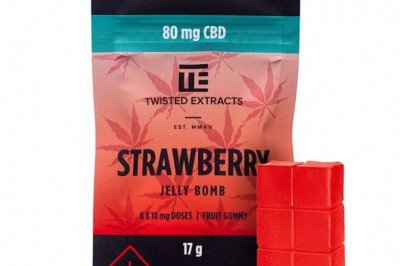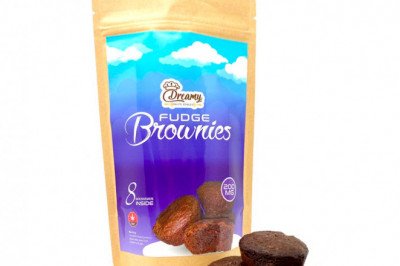
views
Top 10 Packaging Box Printing Process
Top 10 Packaging Box Printing Process
With the improvement of people's living standards, people's pursuit of the quality of life has gradually improved. Therefore, the printing process not only requires the pattern to be printed, but also post-press processing has become particularly important. Printed products generally require fine processing to improve the quality. Post-printing processes such as die cutting, bronzing, embossing, laminating, etc., not only ensure the quality of printed products, improve the quality, but also are an important means of achieving value-added.
Below Chinese printers will introduce to you in details:
①Laminating process
Definition: The processing technology of covering the surface of printed matter with plastic film and heating and pressing with adhesive to form paper and plastic printed matter.
Classification: Laminated spectroscopic film and dumb film.
Features: The surface of the light-coated film product is bright and expressive, and it is mostly used for product printing; the surface of the light-coated film product is non-reflective and elegant, and it is mostly used for image printing.
②Foil stamping process
Definition: Hot stamping is to transfer the aluminum layer in anodized aluminum to the surface of the printed matter by using the principle of hot-press transfer to form a special metal effect. Because the main material of bronzing is anodized aluminum foil, bronzing is also called anodized aluminum bronzing.
Features: The bronzing pattern is clear, beautiful, and the color is bright and eye-catching.
③Glossing process
Definition: The process of applying (or spraying or printing) a layer of colorless and transparent paint on the surface of the printed matter, and then forming a thin and uniform transparent bright layer on the surface of the printed matter after leveling, drying, calendering, and curing. Light process.
Features: Coating can not only enhance the bright surface gloss, but also play a role in waterproof and oil-proof on the surface of the package, protect the printed graphics and text, and does not affect the recycling of paper.
④Bumping process
Definition: Bump embossing is a special technique for decorating the surface of printed matter. Using concave and convex molds, plastic deformation of the printing substrate under a certain pressure, and then artistic treatment of the printing surface.
Classification: cheap ordinary corrosion version and expensive laser engraving version.
Features: The embossed various embossed graphics and patterns show patterns of different depths, with a clear sense of relief, which increases the three-dimensional sense and artistic appeal of the printed matter.
⑤Die cutting indentation
Definition: Die-cutting indentation is a process in which steel knives and steel wires are arranged into a template, and the printed matter is processed into the required shape under pressure.
Classification: Die cutting is the process of rolling and cutting paper into a certain shape on a die cutting machine. Indentation is to use steel wire to stamp out marks on paper or leave grooves for bending.
Features: Abnormal shapes can be produced to enhance expressiveness.
⑥Partial UV process
Definition: It is a silk screen printing process, which enhances the dazzling effect of printed products by partially coating UV varnish on the surface of the carton.
Features: A variety of artistic special effects can be presented on the surface of the printed matter to make the printed matter more exquisite.
Types: thick UV, frosted UV, colorful UV, glass beads, sprinkled colorful powder, etc.
⑦Reverse upward light
Definition: The working principle of the reverse glazing process is to use the mutually exclusive principle of coated UV varnish and underprint UV varnish (ink fountain UV varnish) to achieve the effect of uneven texture and different gloss at one time, that is, at the place without primer Coating varnish achieves the brightness effect, and after coating varnish where there is primer, it achieves a matte effect.
Classification: The surface of the printed product forms a local high-gloss and a local matte low-gloss area.
Features: Two completely different gloss effects achieve high-contrast effects of partial images, decorating and emphasizing the text on the glossy mirror surface.
⑧Scalding one
Definition: Through the change of the bronzing plate, it shows a more metallic and three-dimensional bronzing method. Through the uneven changes of the embossed patterns, the graphics and texts present a metal relief-like texture, and the bronzing graphics and texts jump out of the plane, bringing a stronger visual impact.
⑨ Laser embossing transfer
Definition: After applying UV varnish on the surface of the printed matter, it enters the printing system, combines the printed matter with the laser transfer film, and then instantaneously cures the printed matter with the laser On the print.
Features: It makes the printed products have brilliant and eye-catching visual effects, can effectively improve the packaging grade, and has the green environmental protection characteristics of degradable, recyclable, and easy to handle. It is a high-end printing material that is anti-counterfeit and environmentally friendly.
⑩Freezing snowflakes
Definition: Freezing point snowflake is a kind of fine sandy feeling formed on the surface of the printed product after the ink silk screen is printed on gold cardboard, silver cardboard, laser cardboard, PVC and other substrates, after being irradiated with UV light and cured by UV light. Exquisite craftsmanship.
Features: fine patterns, strong three-dimensional effect, luxurious and elegant.












Comments
0 comment